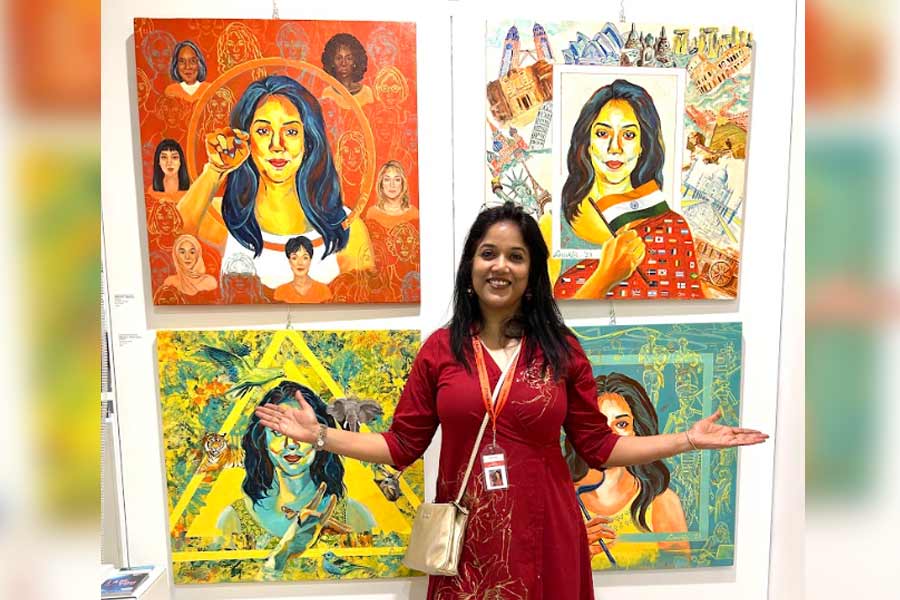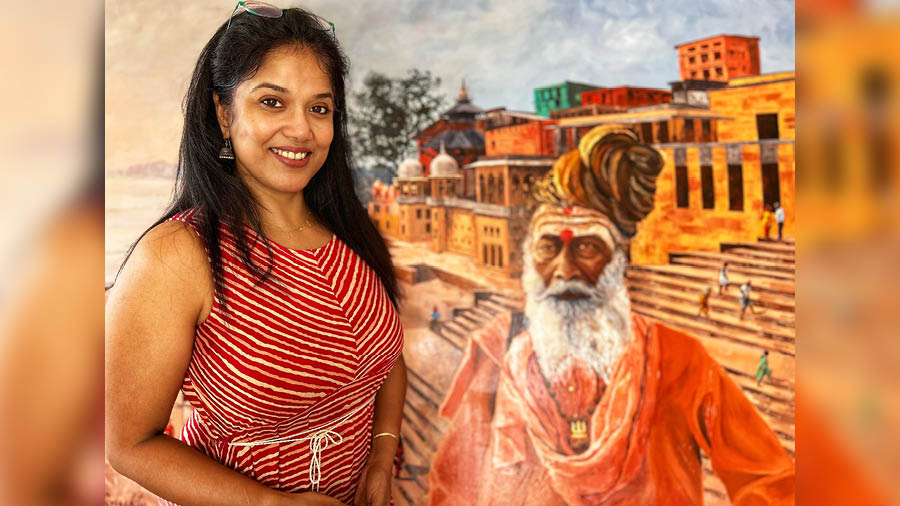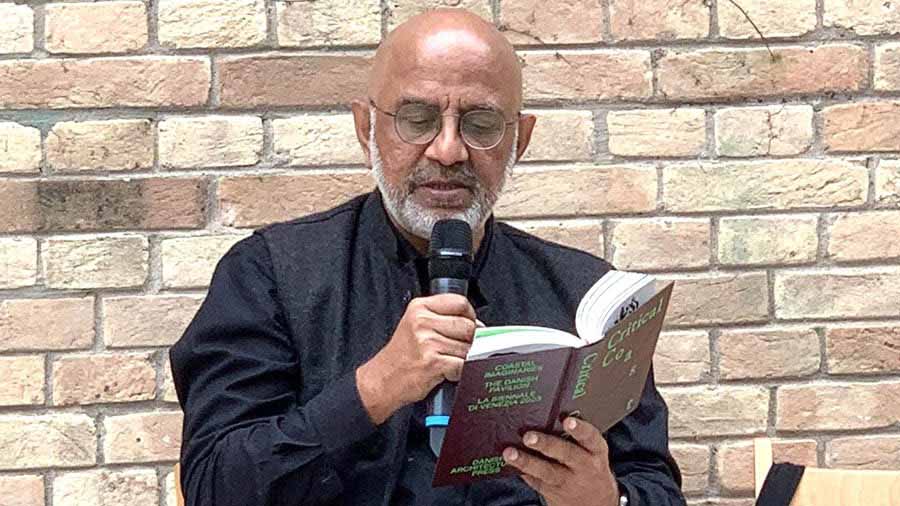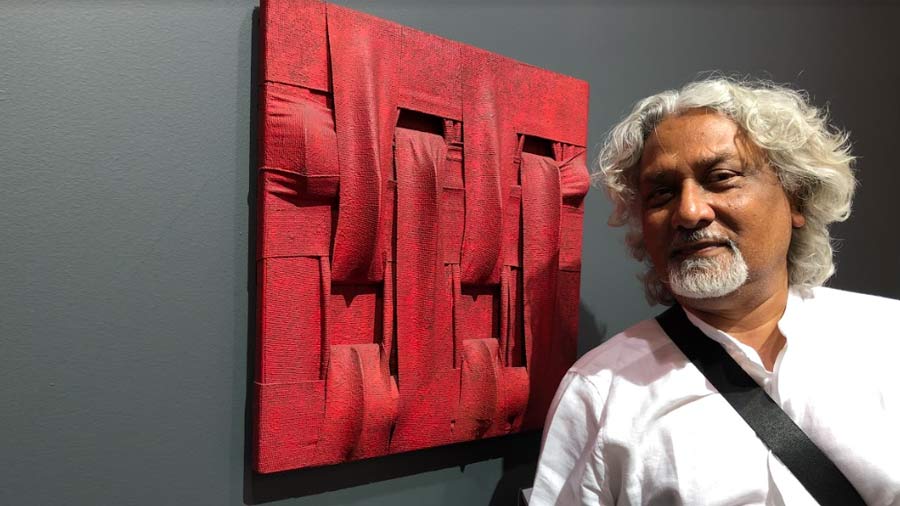It all started late last year when I received an email from the president of the Florence Biennale. The Biennale’s curatorial board, having discovered my work online on the Paris Art Gallery Singulart, further explored my website, were impressed and extended me an invitation to apply for the 2023 biennale in Florence.
The Florence Biennale, one of the world’s leading contemporary arts exhibitions, is held under the patronage of the Italian National Commission for UNESCO, the Italian ministry of culture and the Tuscany region. Excited by the opportunity to showcase my work on this august platform in the land of the Renaissance, I applied. I was fortunate to be accepted, although my commitment to participate solidified only in April this year.
The decision involved careful consideration of the financial commitment encompassing exhibition costs, an extended stay, travel and art logistics. While organisers offered the option of private or public sponsorship with publicity opportunity for the sponsors, I chose to depend on personal resources, unsure about which corporates or institutions to approach. I am hopeful that in the coming years, things change for the better for talented and aspiring artists from India and it becomes easier to get sponsors.
Four self-portraits that mirrored my personal and collective identities
The theme for this year’s Biennale, ‘I am You’, struck a chord at a spiritual and psychological level. Eager to inject a new perspective, I decided to depart from my usual focus on contemporary realistic portrayals of India and create pieces specifically for the Biennale. After intense ideating, conceptualising and internalising of the theme, I opted to go for four self-portraits that mirrored my personal and collective identities with reference to different contexts. The curatorial board’s picky selection process gave my works the nod without any tweaking.
After navigating the challenges of a lengthy registration process, the next step was getting ready for my maiden European journey, which involved fixing a detailed itinerary and securing a Schengen visa. A pleasant surprise awaited me when the Consul General of Italy in India, Gianluca Rubagotti, personally handed over my visa and invited me to showcase my work at a gala consulate event before my departure.
Upon landing in Florence, I was awestruck by the historic architectural splendour from the 15th and 16th centuries in every nook and corner of the city, a stark contrast to expectations shaped by my travel experiences in the US and other parts of Asia. Settling into my cosy Airbnb marked the beginning of my 18-day Italian escapade, during which I seized the opportunity to fill my shopping basket with goodies from a supermarket nearby — fresh cheeses, herbs, meats, pastas and whip-up dinners — relishing that sweet sense of independence once again.
It was in Florence that the true expanse of a global platform became clear to me
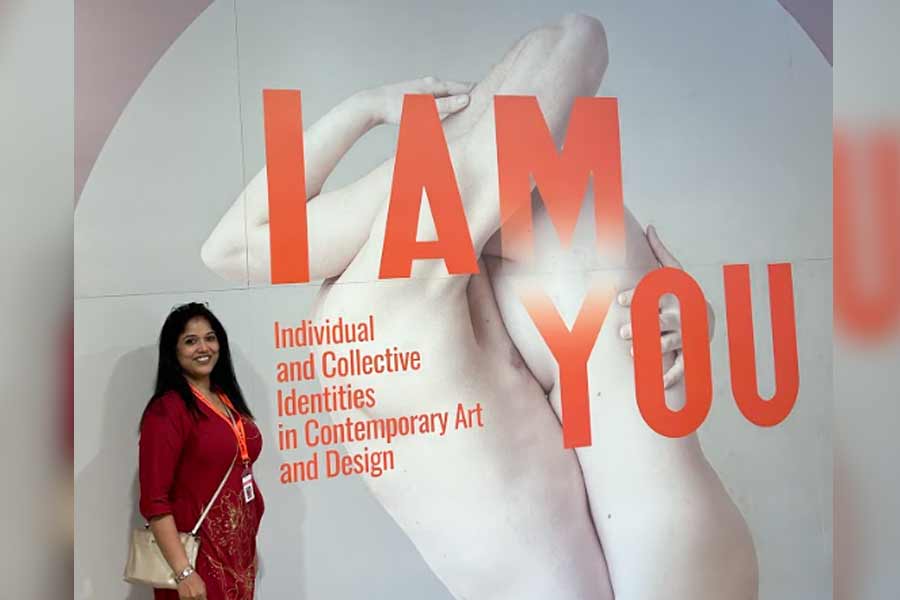
The overall exhibition hosted over 600 participants from 85 countries and featured over 1,500 artworks
Spread across 11,000 sq m within the Fortezza da Basso, a 14th-century fortress, the venue provided an ideal backdrop to the Biennale. A welcoming orange carpet guided us from the entrance gate to the exhibition area. Monumental modern sculptures by the renowned South African artist Marco Olivier adorned the walkway. The overall exhibition layout, which hosted over 600 participants from 85 countries and had over 1,500 artworks, was exceptionally designed with an open-plan structure that facilitated easy access to all the displayed works and provided ample space for unhindered exploration.
I was fortunate that my paintings were displayed in a rather prominent area, with a great visual throw for viewers approaching the series. Unlike other exhibitions where familiar faces abound, this event introduced me to a sea of strangers. However, that proved to be no barrier at all, as we all belonged to the creative community and shared an immediate camaraderie that transcended cultural and language barriers.
The Florence Biennale saw a vast number of participants from Europe and the Americas. In my immediate vicinity, I was surrounded by fellow participants hailing from diverse corners of the globe — the Caribbean Islands, Australia, Saudi Arabia, Japan, Spain, Netherlands and New Zealand. While the idea of a worldwide gathering was not new to me, as I had participated in World Art Dubai earlier, it was in Florence that the true expanse of a global platform became clear to me.
Humbling to imprint the stamp of India and Bengal through on this expansive global canvas
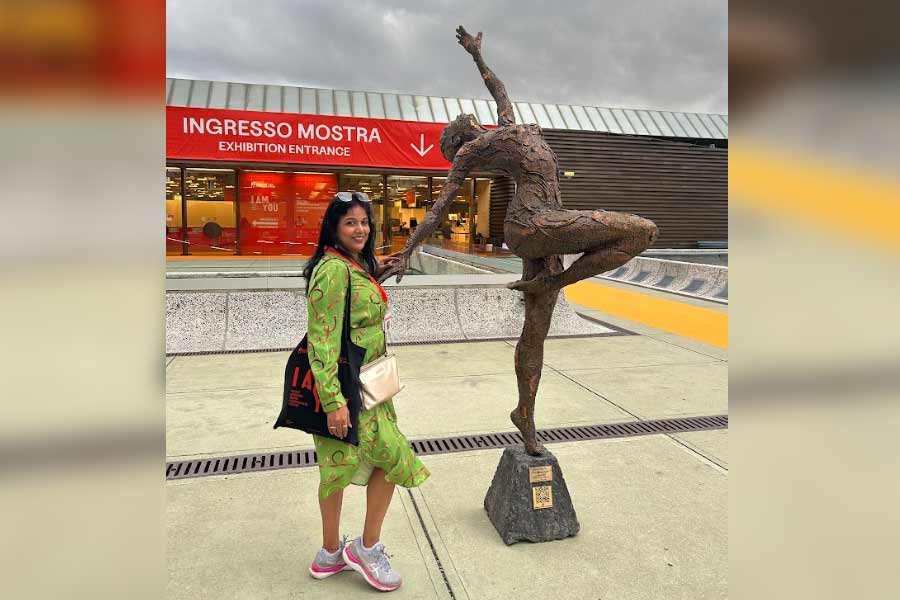
In the exclusive painting category at the exhibition, Anukta was the only Indian passport holder to have her work displayed
A unique aspect of the Biennale was the dual-country display on many participants’ panels reflecting their identity, belonging both to their country of origin and their country of settlement. From the Indian subcontinent, we were three artists representing India. Apart from myself, there was an artist from Hyderabad who held a UK passport, and another from Kerala who was showcasing video art. There were two other artists of Indian origin, one from Singapore and the other from Indonesia. In the exclusive painting category, I was the only artist holding an Indian passport, and that felt like a privilege! It was a humbling experience to imprint the stamp of India and Bengal through my works on this expansive global canvas.
The opening day of the Biennale started with the inauguration, and was dotted with several interesting displays of performance arts. Among them, what stood out to me was ‘Flawed Euphony’, focusing on body shaming, by a duo with connections to China, Australia, Venezuela and Italy. The day also featured a sumptuous lunch buffet organised for the participants that had the best of food and wine from the famed Tuscany region.
The exhibition began at the start of a weekend and was spread over nine days between October 14 and 22. Apart from the main pavilion, there was an adjoining section where primarily installation art and design features were displayed. The main pavilion had a large theatre area where various conferences, discussions and lectures were held on a gamut of topics related to art. It also served as the place where lifetime achievement awards and other honours were presented to eminent art personalities from different parts of the world.
The works that stood out for me
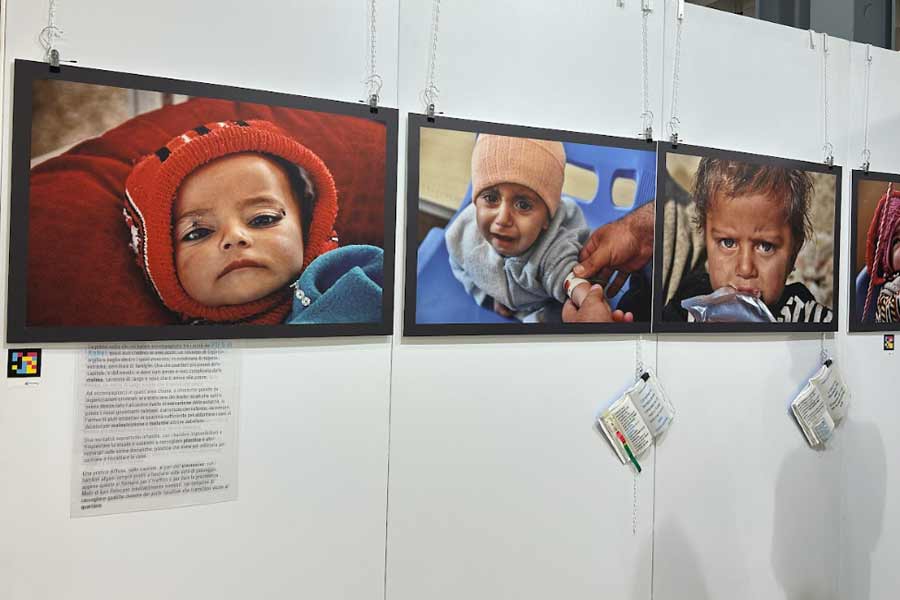
War-stricken faces of children from across the world
The Florence Biennale, being a multidisciplinary art and design event, showcased several categories of art apart from painting, ranging from sculpture to new media art, from ceramic art to installation art to video art and many more. For design, the sub-categories included architecture and town planning, industrial and product design, interior design, and more, providing a visual and intellectual treat to visitors and participating artists alike.
Given the sheer number of artworks and designs on display, delving into describing the ones that stood out for me would merit a separate article! However, let me explore a few that left a lasting impression. One of them was a collaboration between a war photojournalist and UNICEF, titled ‘Can you smile for me?’. It showed war-stricken faces of children from across the world. Another section focused on Ukrainian artists expressing their country’s ongoing turmoil through art. Yet another was a stunning collection of photographic works exploring abstract forms centred around the human body, with one piece blown up to form a large backdrop for the theme, creating an ideal setting for group photos and selfies throughout the exhibition.
Another standout aspect was the global spotlight on indigenous cultures, particularly the Maori tribe’s Tahu Collective from New Zealand. They gave a contemporary spin to their unique tribal art. Beyond the art, their lively Haka performances were a source of great joy and interactive entertainment. Equally intriguing was the parallel I noticed with tribal art from the Caribbean, specifically by an artist from Guadeloupe, revealing a striking similarity with New Zealand despite the geographical distance.
One of the Dutch artists shared a special narrative. Specialising in painting colourful, geometric patterns, he had spent a year mastering the art of stitching suits, thereby presenting a one-of-a-kind fusion of abstract art and fashion. Meanwhile, a Mexican artist tackled the enduring “glass ceiling” for women in her own way, while another’s art evoked memories of Caspar Friedrich’s masterpiece ‘Wanderer above the Sea of Fog’, in this case with a painting of a girl facing a serene, open expanse.
I hope to see heightened awareness and support, whether in the form of sponsorships or logistical assistance
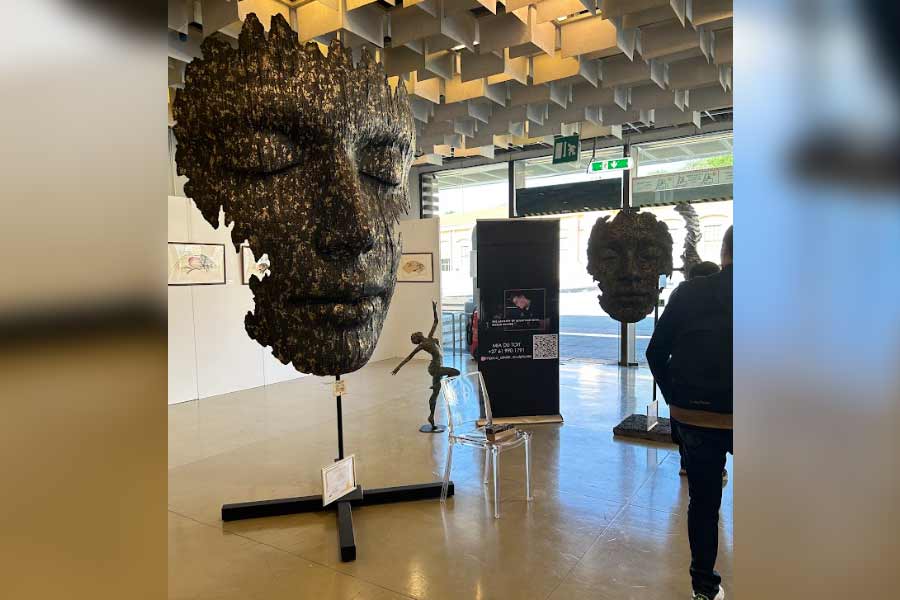
Anukta hopes that more artists from India can make it to the Florence Biennale in the time to come
Engaging with fellow participants led to a humorous incident involving an elderly Spanish artist. Despite her persistent attempts to converse with me, language barriers kept our interactions limited to greetings and smiles. One day, determined to communicate, she initiated an animated conversation, leaving me utterly confused. Another artist, fluent in Spanish, stepped in to assist, but she, in turn, could understand English without speaking it. This led to a part-frustrating, part-comical series of translation attempts accompanied by more smiles. In a Eureka moment, I decided to use Google Translate. I asked her to speak directly into the app and I did, too. Soon, much to our relief, we were laughing and bonding.
At a cerebral level, I enjoyed the exchange of ideas at the several panel discussions by the various eminent speakers from diverse fields within the global community of art and design. The overarching theme centred around the transformative power of art and its potential to instil change and inspire hope. I also enjoyed the lectures that delved into the intriguing and controversial aspects of divergent personalities such as Pablo Picasso and Salvador Dali.
Amidst a sea of talented artists, I had the privilege of being interviewed for my works. One interview was conducted by a local media agency in Florence, while the other was conducted by the Florence Biennale media and communications team. Through my series, I was able to draw attention to the need for inclusivity and harmony in a world torn apart by war, separatism and unsustainable consumption of our natural resources. My paintings, adorned with numerous Indian motifs, sparked a lot of curiosity and I felt a deep sense of pride as I elaborated on the multifaceted ideas that hold great significance in India.
In the years to come, I earnestly hope for increased participation from our country at this esteemed event. More importantly, I hope to see heightened awareness and support, whether in the form of sponsorships or logistical assistance, coming from art institutions, galleries and corporate entities. Such backing would not only inspire numerous artists to pursue higher qualifications but would also open avenues for future participation for me.
On the final day of the Biennale, as I bid farewell to co-participants and the exceptional organisers during a sun-downer party at the venue, I gazed at the beauty of the setting sun, exchanging promises to return for another invaluable experience.
